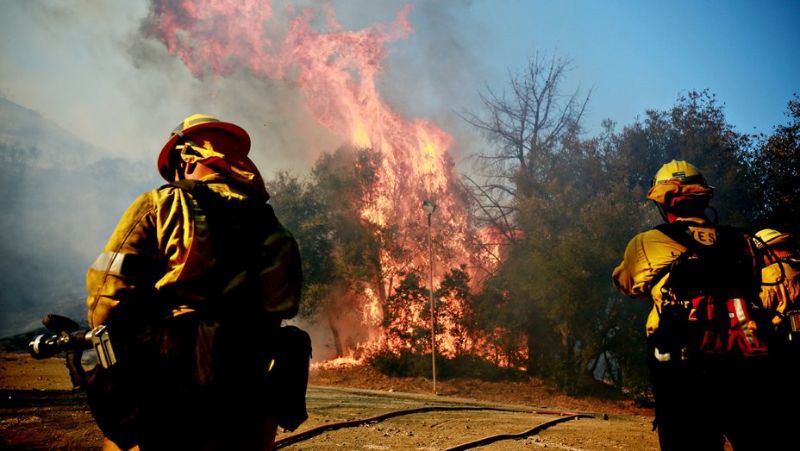This past week the Woolsey and Hill Fires in Southern California and the Camp Fire in Northern California have affected millions of people in the most deadly and destructive fires in our state’s history.
Donate!
Before we dive into this week’s blog, I want to salute the first-responders and offer condolences to all the people that have lost homes and loved ones.
Please donate to help your California neighbors in need. We here at Manhattan Pacific Realty have donated $500 to the relief efforts of the American Red Cross. We will match donations from every reader up to a total of $500 of those that choose to donate after the posting of this blog. Shoot your donation receipt to [email protected]. Every little bit helps!
Fire Insurance
Due to the devastation caused by these fires, I wanted to talk about fire insurance on today’s blog. Most homeowners have no idea what policy they have and what is or is not included.
I took some time this week to interview my insurance broker, Chris Gutilla Jr. of DiBuduo & DeFendis Insurance Brokers. I picked his brain on the details of fire insurance and this is what I came away with…
Most Standard Insurance Policies
I have heard many people say, “Well, at least they have insurance.” While I do suspect this is true, in most home insurance cases, fire policies have details that do not fully cover impacted homeowners.
Most standard insurance policies will cover the “replacement value” of your home. Intuitively, many of us would think that would cover most homeowners, but there are important details that are not in most standard policies. The biggest item left out almost always is Ordinance and Law Supplemental insurance.
Ordinance & Law Supplemental Insurance
Ordinance and Law Supplemental coverage accounts for changes in the building code from when your home was built or remolded. Changes in the code are SIGNIFICANT costs to homeowners that are not always covered. Let me give you some examples:
- Fire sprinklers to be installed in new homes
- Main sewer laterals to be replaced from the home to the middle of the city street
- Detailed landscaping plans for water conservation
- Changes in insulation, heating and cooling, and energy efficiency
- Soon all homes will be required to have solar installed in the state
- Water efficient fixtures, energy saving electrical, and new roofing requirements
The above costs will affect most homes older than five years due to new title 24 laws and cities putting sewer and sidewalk work on homeowners.
Now this is only scratching the surface. What if you have a beach home with old single-pane windows? Most cities require more expensive double-pane. You would be on the hook for that difference due to the change in code. Without ordinance and law supplemental insurance, most homeowners will be on the hook for hundreds of thousands of dollars in extra costs!
Now you might be thinking, Ordinance and Law Supplemental coverage must be expensive like earthquake insurance, right? Not true.
I have had many fire policies quoted for my income properties (2-4 units) quoted for $150 per month. Ordinance and Law Supplement insurance has ranged from $15 to $50 extra per month depending on the age of the building.
I opt to not have Ordinance and Law Supplement insurance on our newer buildings (less than 10 years old). For older buildings, the supplement is worth every penny.
Loss of Use Insurance
Another big item Chris educated me on is Catastrophic Loss of Rents insurance. If your income property burns down, tenants will no longer be paying rent to cover your mortgage. Ouch!
This same concept applies to homeowners who have lost their home. You will now need to pay rent as you are waiting for your home to be rebuilt. You may want to consider what is known as a Loss of Use supplement, where the insurer will pay for 12 to 24 months of a rental on your behalf.
I always opt for 24 months because it takes a long time to permit and get a home out of the ground. And, if you live in an area where utilities are down for weeks or months, infrastructure like roads and sewers are damaged, or even the building department at the city burns down…you will likely need longer than 24 months.
Real Estate Market Impact
There are a lot of implications for a real estate market when there is massive loss from a fire.
For one, home builders and small investment firms start to purchase property and rebuild communities. I don’t think it is appropriate to dive into all that today, but I would like to give some anecdotal evidence.
Our Transaction Coordinator, Kelley Dahlen, was house hunting in Petaluma (North Bay Area) when the Santa Rosa fires occurred. Since Petaluma was unaffected by the fires, Kelley and her husband immediately found themselves competing with multiple offers for most of the homes on the market. This was likely due to families wanting to re-start their lives elsewhere or investors looking for rentals to support families displaced.
Although anecdotal, this is a real-life tale of how the market is sensitive to the supply and demand of hundreds of homes being lost while communities take time to rebuild.
If you are searching for a home in bordering areas to these fires, expect more competition and increased rents because of the unfortunate fire events this past week.
Conclusion
I hope this blog post will not only inspire you to donate (be sure to send us your receipts to match!), but also to call your insurance agent and take a hard look at your policy. These policies mentioned above tend to be inexpensive and can offer excellent coverage to help protect your home, investment, and most importantly, your family’s well-being.
Stay safe, California.

